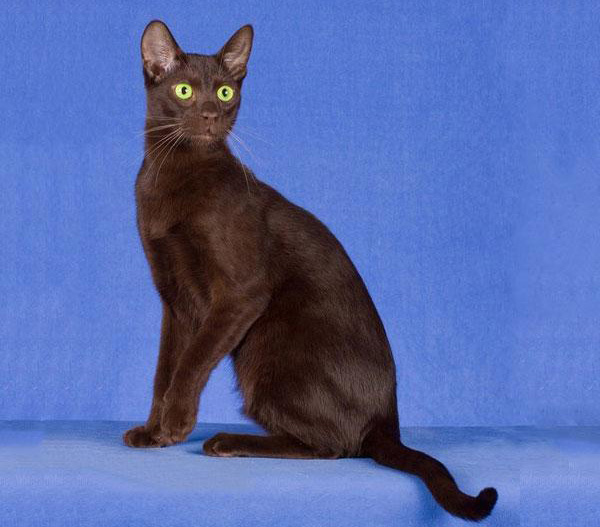Havana cat
IUCN
LCBasic Information
Scientific classification
- name:Havana cat
- Scientific Name:Havana brown cat, chestnut exotic cat
- Outline:Carnivora
- Family:Felidae
Vital signs
- length:30-50cm
- Weight:2.5-4.5kg
- lifetime:10 year
Feature
Cigar color cat
Distribution and Habitat
Originated from the UK
Appearance
The length of the skull is slightly greater than the width. The eyes are large and slightly oval, with a green color that is mainly crystal clear. There are obvious depressions and spots on the eyes, muzzle, and long whiskers. The bridge of the nose is sunken. The lower jaw is wide, strong, and muscular. The ears are large, rounded at the top, slightly tilted forward, and the distance between the two ears is large. The nose is short and straight. The body is medium-sized, with an oriental slender body. The waist is high and the back is flat, and the muscles of the whole body are dynamic. The shoulders and neck are in proportion to the body. The paws are small and oval. The tail is medium-length and the tail tip is thin.
The fur is medium-length for short-haired cats, straight and shiny, and densely distributed close to the body surface. The fur is brown (chocolate) and gray (frost) with a warm rose color. The chocolate color is a redder and darker tea color than the Burmese cat. The
Details
The Havana cat was bred by British animal husbandry experts in the early 1950s. It is a hybrid of chocolate-point Siamese cats and British short-haired cats. Because its fur, whiskers, and nose are all brown, the same color as the famous Cuban Havana cigars, it is named Havana cat, which means cigar-colored cat.

The Havana cat has been famous for centuries because many people believe that the all-brown cat can protect its owner from bad luck. The origin of the Havana cat may be in Southeast Asia, and it came to Britain in the 19th century as a branch of the Siamese cat. In 1894, Master Timkey Brown first appeared at a cat show. It was described as a "Siamese cat with smooth brown fur and blue-green eyes". In 1930, the Havana cat became a full brown breed. In order to make this cat more rich and warm reddish brown on the basis of brown, British breeders conducted various combination experiments and mated Siamese cats with chocolate fur genes and chocolate spots with British black shorthair female cats to obtain offspring with changed color. After 1953, it was further mated with Russian blue cats, Siamese cats and other cat breeds, and finally bred today's Havana brown cats.
Like Burmese cats, the UK and the United States across the Atlantic have different standards for judging this cat. The British Havana cat looks more like the American exotic pure brown cat keepers, a Siamese cat; while the American brown Havana cat is closer to the Russian Blue cat than the Siamese cat, because the American Havana cat has a shorter head than the British Havana cat, but longer hair; and its body shape is a semi-dwarf horse type, not a muscular and solid type.
Havana cats have extremely high IQs. They can quickly remember their names, touch their owners with their paws to get their attention, or jump in front of their owners to attract their attention. Havana cats also have strong adaptability. As long as they can get the care and attention of their owners, they will not be affected too much even if they live in a family that needs to migrate frequently. But like other pets, Havana cats cannot be left alone at home for a long time.
Protect wild animals and stop eating game.
Maintaining ecological balance is everyone's responsibility!








